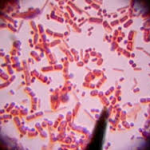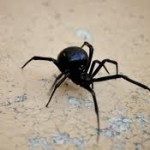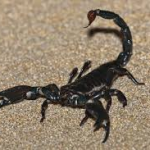Archive for August, 2014
Flesh Eating Bacteria
Posted by: | Comments The CDC reports that each year approximately 35 people die from infections associated with a water based bacteria that causes severe tissue damage and breaks down the skin. This fleshing eating bacteria is found in the warmer Gulf Coast waters around Florida, Alabama, Louisiana, Mississippi and Texas. Even if you don’t live in one of these states, travel and vacations can expose people who live in other states.
The CDC reports that each year approximately 35 people die from infections associated with a water based bacteria that causes severe tissue damage and breaks down the skin. This fleshing eating bacteria is found in the warmer Gulf Coast waters around Florida, Alabama, Louisiana, Mississippi and Texas. Even if you don’t live in one of these states, travel and vacations can expose people who live in other states.
As the waters warm in the gulf each summer, it brings an increase of a bacterial infection called Vibrio vulnificus – also known as the “flesh eating” bacteria. Those infected will experience vomiting, diarrhea and abdominal pain. The skin can redden, ooze with puss and wounds will continue to grow in size. Those with depressed or immature immune systems this can be a fatal infection. When infected, surgeons will need to remove the dead tissue and clean out the wound. Special bandages will need to be replaced on a regular basis. Patients will then receive antibiotic treatments that could last up to 14 days.
While this flesh eating bacterial infection is rare, you can take a few precautions. First cover all exposed wounds while swimming or playing in the coastal salt waters of the gulf. Better yet consider avoiding any direct contact with these waters when you have a skin wound. Also, avoid eating any uncooked seafood’s that are harvested from the gulf, such as oysters.
First Aid for Poisonous Bites
Posted by: | CommentsWith more outdoor activities, the potential of getting bitten by a spider or insect increases. Though not all bites are poisonous, several are and if bitten, first aid treatment is immediately necessary. Here is a list of possible poisonous bites and their treatments:
Black Widow Spider
Though rarely lethal a black widow bite can be serious. You can identify the black widow spider by the red hourglass marking on its belly. The black widow spider bite may not be painful at first. In fact, you may not even feel the bite. Soon afterwards you’ll begin to notice a bit of swelling and red marks developing. If not treated immediately, intense pain will develop stiffness, chills, fever, severe abdominal pain and vomiting will occur. Seek immediate medical attention and anti-venom treatments.
Brown Recluse Spider
The brown recluse is identifiable by the violin shaped marking on its back and it can produce a mild sting when it bites. Within a few hours local redness will develop at the bite site along with intense pain. A fluid filled blister will develop and pop leaving a gaping ulcer in the skin.
Clean the wound site with plain soap and water. Tie a snug bandage just above the bite site and towards the heart to slow the progression of the venom. DO NOT tie the bandage so tight that it cuts off circulation. Apply a cold cloth or a bag of water and ice combined to the injured site. Seek immediate medical attention.
Bee, Yellow Jacket, Wasp, Hornet
Bees lose their stingers when they sting and die soon after, but yellow jackets, wasp and hornets don’t lose their stingers and can inflict multiple stings. Most people will experience local mild swelling and itching. Taking an oral antihistamine for the itching and acetaminophen for the pain will be all the treatment you’ll need. Though some people can have a severe anaphylactic reaction. For those individuals, the use of an epipen (epinephrine auto-injector) would be necessary and continue to seek immediate medical attention.
Fire Ants
Found in most of the southern part of the United States, these ants look similar to most other ants. Except they can produce a powerful and painful sting. These ants will attach themselves to the skin with a powerful bite and produce several stings from their abdomen. This venom can cause red bumps that burn and itch. Also a painful puss-filled lesions may also occur. Ice packs antihistamines and pain relievers may relieve some of the discomfort. If a larger amount of stings occur, a severe life-threatening reaction may result. Immediate medical attention is needed.
Puss Caterpillar
Yes there is a Caterpillar that can be harmful to your health. This long haired Caterpillar has stingers hidden underneath their hairy body. When stung, a person will feel intense pain, develop a rash, accompanied by a fever, vomiting and severe muscle cramps. Remove stingers by using cellophane tape and seek medical attention.
Scorpions
Found mostly in the Southern and Western states and scorpion sting can be life-threatening. Though not all scorpions are venomous, those that are can cause a painful sting. If stung, you’ll experience severe pain, increased sweating, swelling, vomiting, itching and vision problems. Immediate medical attention is necessary.
Mosquitos
Other than causing an annoyance and bite that causes us to itch, the mosquito can carry and transfer blood borne viruses like West Nile virus, Dengue fever virus and the Chikungunya virus. If you begin to experience a high fever, joint and/or back pain, vomiting and develop a rash, see your physician.









